Buses in Bolivia have become something of a joke for me.
Through fourteen weeks of travel in this country, I’ve caught more buses than I care to count, and feared for my life more times than I want to remember.
No, seriously.
For the vast majority of travellers, the only way to get around Bolivia is by bus. There are opportunities for flights, of course, but due to the landlocked state of the country those plane fares can cost extortionate amounts – and so we turn to the infamously bad roads and dodgy drivers to transport us from place to place.
The reputation of Bolivia’s buses precedes itself. Before I arrived in the country, I’d been warned about researching companies and taking heed of bad reviews, checking out what the bus looked like before boarding (I’m talking tyre treads and condition of the undercarriage), and most importantly – though perhaps most trickily – ascertaining whether or not the driver was drunk.
But there’s nothing quite like firsthand experience to really get to grips with something. Luckily I’ve successfully navigated the entire Bolivian bus process so many times – from buying a ticket through to arriving at my chosen destination – that I feel I know how it all works.
So here’s a step-by-step analysis of a Bolivian bus journey. Hopefully it comes in actual use to some people, and doesn’t just serve to terrify. That’s not my main objective at all…
Read more: Everything I learned about backpacking Bolivia
Buy your bus tickets in Bolivia at the station
The first thing you’ll want to do is head to the bus station. Whether you planned to go there or not, conflicting information about bus times, prices, comfort level and whether buses even go to your destination or not will lead you to the station eventually.
There are usually lots of companies sending buses to the same destination. If you’ve had recommendations for specific companies, head straight there. If not, do the rounds of each desk while trying not to be deafened by the women who shout their destinations at the same volume, regardless of whether you’re beside them or not.
Once you spot your destination on a bus company’s door, go and ask questions. There are never too many.
Popular ticket-buying examples include:
- How much is the cheapest seat? Do you have cama or semi cama? Sellers will often try and flog you the seats at the front, with more leg room and a better view – but they’re not actually worth it in my opinion. Choosing a company with semi cama (semi reclined) or cama (fully reclined) seats, however, is always a good idea.
- When does the bus leave? How long does the journey take? When does it arrive? This information will often differ so it’s good to be explicit.
- Is there a toilet on board? Does it work? Self explanatory, really. No toilet equals a much more stressful journey.
Don’t be afraid to ask a ton of questions and then leave that desk. These women are often very good at guilt tripping you into buying a ticket, even if you don’t feel ready to yet.
Once you hand over the cash, make sure you get a ticket with your name, the date, time and seat number written on it. Check that the bus leaves from the same station you bought your ticket at, and not some random place in town. It’s more likely than you think.
Although it’s usually not necessary to buy bus tickets ahead of time, I often ended up doing so. Call it being over-prepared, but I liked to know that lugging all my possessions to the bus station would result in being able to board a bus.
On the other hand, you can be too prepared in Bolivia. Most companies won’t let you reserve or pay for bus tickets more than one or two days in advance. Even if you explain that you’ll be on a tour/trek and can’t turn up at the station on the day you need to in order to reserve – in which case, scrap being prepared and just turn up when you want to catch a bus.
And don’t worry about not having asked multiple questions: despite wishing for the contrary, much of the info you get is likely to be wrong anyway.
Dress the part for Bolivian bus temperatures
Never forget that bus temperatures in Bolivia are always an absolute gamble.
Travellers will always hear the rumour that a Bolivian bus journey will be freezing – and judging on the huge blankets passengers carry on board with them (sold at every bus terminal if you ever fancy being curled up under a giant multicoloured whale/panda/kitten for ten hours), this rumour could well be true.
However, on the six or seven long-haul overnight bus journeys I took through Bolivia, I was never chilly enough to warrant a blanket. Often I was overly hot, and looked incredulously at the wrapped up Bolivians snoring softly around me.
By now, I’ve adapted to a system that works for me. I dress in leggings and a standard top plus cardigan, then carry my coat and pack a scarf, extra socks, and sometimes a hat in my bag. There have only been two night buses where I was actively cold enough to not be able to sleep; the rest I’ve usually been too hot!
Board at the bus station
You’ll arrive at the bus station to probable carnage; the later your bus, the busier the station will be. Crowds of elderly women with giant striped bags on their backs, children running riot, and numerous pet puppies and stray dogs sniffing at absolutely everything.
If you’ve already bought your ticket then it’s just a matter of having your bags checked, weighed and ticketed at a specific counter somewhere in the bus station, before then joining a different queue for the actual bus.
Oh, and don’t forget to buy a departure ticket before you start queuing. It’s some kind of bus station departure tax (which of course can’t be included in the ticket price, that would be too easy) and if you don’t have it when you attempt to board your bus, you’ll be forced to go get one.
When you’ve deposited your main backpack in the hold of the bus (without any valuables inside – you never know), you can get on board. If you’ve paid for a specific seat, by all means sit in it. If not, however, there’s a series of checks you can do to make your journey a bit more comfortable.
- Check the window: does it open/close? Often windows are bolted shut or stuck on open, which can either be hell on a hot journey, or an equal nightmare when it’s raining and you can’t avoid getting soaked.
- Check the seat: does it recline, or is it stuck? I’ve dealt with both: seats that are permanently upright and ones over-encroaching on the personal space of the seat behind. If you want to risk the wrath of the guy whose lap you’ll be lying in, go ahead. Otherwise attempt to switch seats.
- Plan your bag security: is there somewhere safe to store it? I never put possessions in the overhead section unless there’s absolutely no room around my feet, and even then it’s only clothes or water. Usually I sit with my little leather bag around my shoulder/waist, with an iPod and wallet inside, then padlock my day bag and put it between my feet, with one strap wrapped securely around a foot. If there’s something you can actually padlock your bag to, all the better. I also tend to have a quick glance at the passengers around me; if someone nearby looks dodgy, I end up with my day bag on my lap instead.
Are you sitting comfortably? You might be waiting a while…
Newsflash: buses usually leave late in Bolivia.
After much investigation, I’ve decided it’s partly to do with passengers arriving after their bus is supposed to have departed. It’s also often the guy carrying a ukelele, who starts wandering the aisle and playing pretty atrociously for about 20 minutes, until the bus has started to drive out of the station.
He’ll give a heartfelt speech about why you should give him a donation, and will follow up with how glad he is to be Bolivian and to have the opportunity to play for you all.
By this point you may have started looking out the window, yawning, stretching, and generally pretending to be asleep. This is good practice for later.
Settling into your bus journey
Within minutes of leaving, the snorers will make themselves known. Without exception, there is always a resident snorer on board – it’s just a matter of judging the decibel level of their snore, the specific type of snore emitted, and their distance from you.
There are also often crying babies on board, but remember the golden rule: babies don’t know better, and shouldn’t be muttered darkly about as much as the snorers, who most certainly should know better, and are clearly doing it just to annoy you. Damn them.
The only way around a particularly bad snorer/baby is to crack out the Bolivian Bus Supply Kit: components are listed below, in order of importance. For me, at least.
Always make yourself a Bolivian Bus Supply Kit!
– Ear plugs: in my opinion, absolutely crucial. The line between an average night’s sleep and being close to lunacy from sleep deprivation.
– Eye mask: similarly crucial, due to the strange times of night the bus driver decides to turn the lights on. Sometimes there’s a stop (that nobody ever told you about) for passengers to get on or off the bus, usually at 3am. Sometimes the driver just likes having the lights on for a bit.
– Layers, sleeping bag, water, snacks, music player, e-reader: some or all of these are what will make your bus ride range from ‘terminally boring’ to ‘actually pretty alright’. I tend to opt for a fully charged iPod, eye mask on, coat as a blanket, and hope the journey goes quickly.
– Toothbrush, toothpaste & deodorant: only crucial for those very lengthly or overly hot rides. But I can guarantee its a great feeling to brush your teeth in a moving bus and spit toothpaste out of the sliding window.
– Hand sanitizer and toilet paper: again, only crucial for those more concerned with their hygiene – but I always carry some kind of toilet paper when travelling, and after experiencing Bolivian bus toilets, I’d be hard pushed not to count hand sanitizer as an essential!
Bolivian bus toilets: a never-ending drama
If you’ve managed to score a toilet on your bus, then you’re very lucky – although it could easily be locked for no reason halfway through the journey (when passengers would presumably need it the most), or be so filled up with urine that you suddenly don’t need to go anymore. In which case, problem solved!
Guys have a great alternative to the toilet dramas, if they’re willing to go to the effort of cutting the top off an empty water bottle. Hey presto, DIY pee bottle! Although you’ll need the window seat and a stretch of road that’s not too rocky/bumpy/swervy. And a window that actually opens, of course, otherwise things will get messy.
For the ladies, it’s more straightforward, although no less problematic. Asking the driver to pull over for a bathroom stop will eventually yield the right result, but it’ll take a good twenty or thirty minutes for him to do so – which means you need to make sure you’re not at desperation levels when you first ask.
Also, don’t ever hold out hope that a Bolivian will ask the question for you; they are unbelievably good at holding out for a toilet break that presumably never comes if there isn’t a Westerner on board. I get the feeling they’re willing to risk a bladder infection just for the sake of not being disruptive…
Of course, the bus does make some totally random stops along the way. Often it’s for a troop of teenage girls or elderly women to parade up and down the aisle, proclaiming that they’re selling plastic bags filled with potato and chicken, or chips and frankfurter slices, or even occasionally a bit of trout.
Usually a number of hands go up for these food bags: I’ve rarely ever bought one though, due to the uncomfortable awareness that there’s a likelihood of needing the on board toilet about ten minutes after eating one.
Attempting to sleep on a Bolivian bus
Once all the food selling stops and toilet emergencies are over and done with, it’s time to settle down to what passes for sleep.
This is when you really notice the presence of the people sitting in the aisles. I’m still not sure if these guys have bought cheaper tickets or they just had some bad luck, but that doesn’t change the fact that laying your baby down to sleep on a blanket in the middle of the aisle of a pitch black bus is a ridiculously bad idea.
One night bus that actually a toilet on board also had a woman and her two children laying claim to the top three steps all night. Very bad Bolivian bus etiquette, in my humble opinion.
Around 3am is when the bus starts to rock alarmingly. The driver – maybe to keep himself awake – has begun to attack each twist and turn in the road as if it’s a personal demon. Speed is clearly his friend.
This is around the time where you start to wish train travel had actually caught on in South America.
The eventual arrival at your destination (hopefully)
At some point, either before dawn or after, you’ll be awoken somewhat unnaturally by the sound of someone’s phone. Not ringing, but simply playing songs that the owner really likes, and has decided that every one of his fellow passengers will also really enjoy listening to at 5am. Because nobody complains, this will probably continue until the bus reaches the bus station.
If you did your research at the bus station before buying a ticket, you’ll hopefully be disembarking at a relatively reasonable hour of 6am or later – i.e. when it’s daylight. If not… Well, you could easily find yourself outside a dark and chilly station building in the middle of the night.
Because Bolivia seems hell bent on having their buses depart at a time that means their arrival is woefully antisocial – such as a five hour bus which only leaves at 8pm, 9pm and 10pm – you have to be very careful when choosing your buses.
Also don’t try and explain the ridiculousness of the bus times to the saleswoman. She won’t appreciate your efforts.
You’re off the bus. Finally!
You’ve stumbled off the bus and reached fresh air. Oh, the joys.
You might catch a taxi to your hostel, or simply walk. Although if you’re unsure, remember that you could end up in a taxi like this one.
Get through check in, heave your bags upstairs into a dorm and vaguely congratulate yourself as you fall into the hostel bed you hopefully pre-booked before arriving in this umpteenth new Bolivian city. Otherwise, good luck wandering the streets under the weight of your backpack and with seriously drooping eyelids.
And whatever you do, don’t think heading back to the bus station to catch another bus is a good idea. You’ve had enough of those things for one day.
A Bolivian Bus Breakdown
Here’s a breakdown of the buses I caught during my time in Bolivia.
- La Paz to Sucre: 100 Bs for 10 hours, semi cama seat
- Sucre to Potosi: 15 Bs for 3 hours, normal seat
- Potosi to Tarija: 80 Bs for 10 hours, semi cama seat
- Tarija to Tupiza: 80 Bs for 7 hours, semi cama seat
- Tupiza to Villazon (Argentinian border): 20 Bs for 2 hours, normal seat
- Uyuni to Potosi: 30 Bs for 5 hours, normal seat
- Potosi to Cochabamba: 60 Bs for 7 hours, semi cama seat
- Cochabamba to Torotoro National Park: 25 Bs for 5 hours, normal seat
- Cochabamba to La Paz: 70 Bs for 9 hours, semi cama seat
- La Paz to Lake Titicaca: 40 Bs for 3/4 hours, normal seat


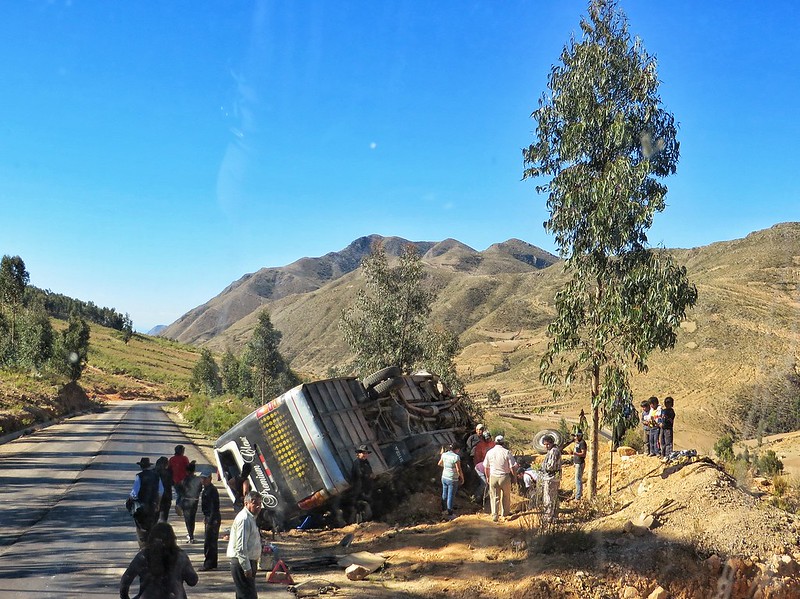
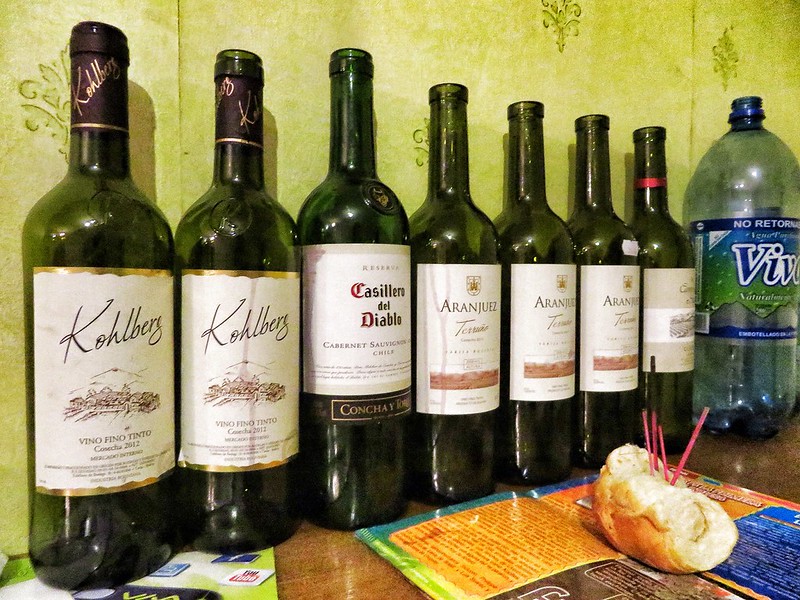


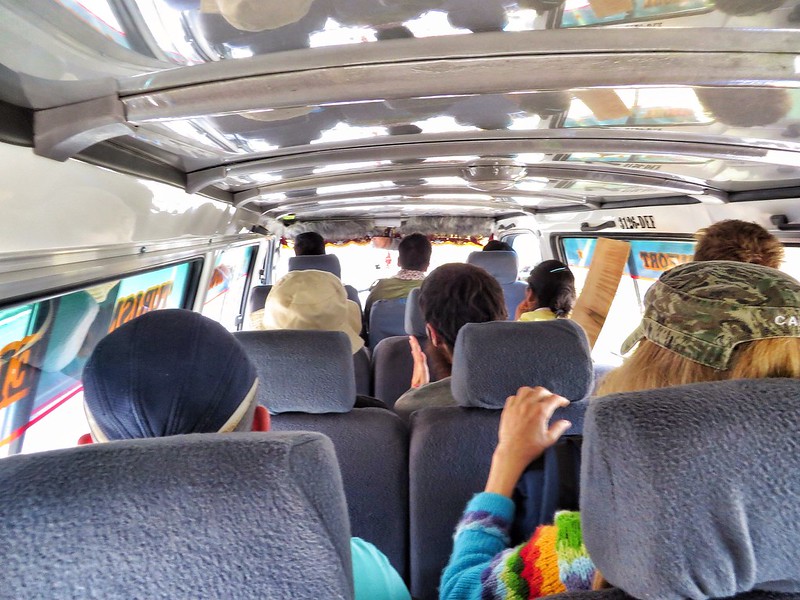
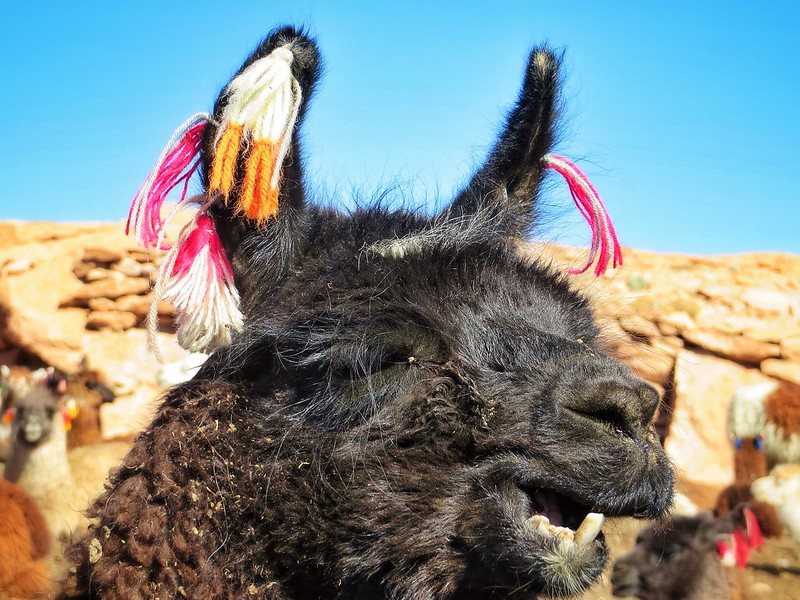
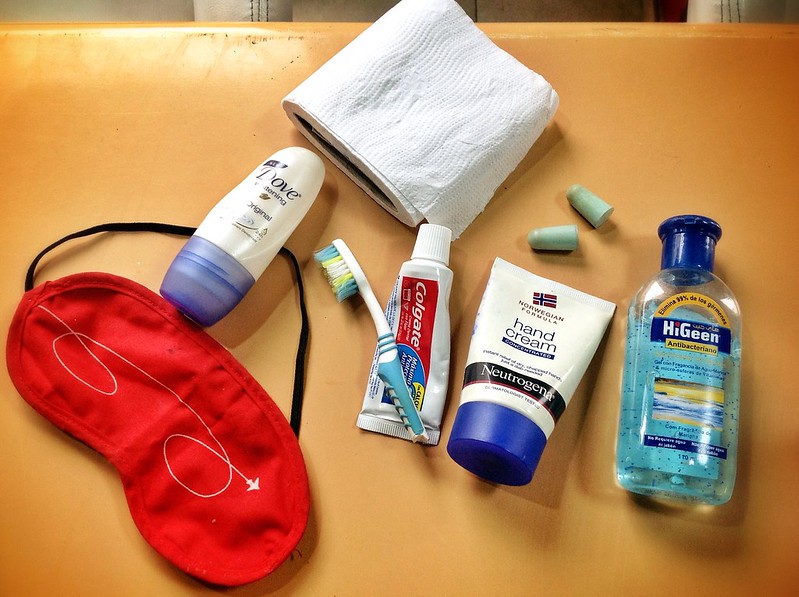
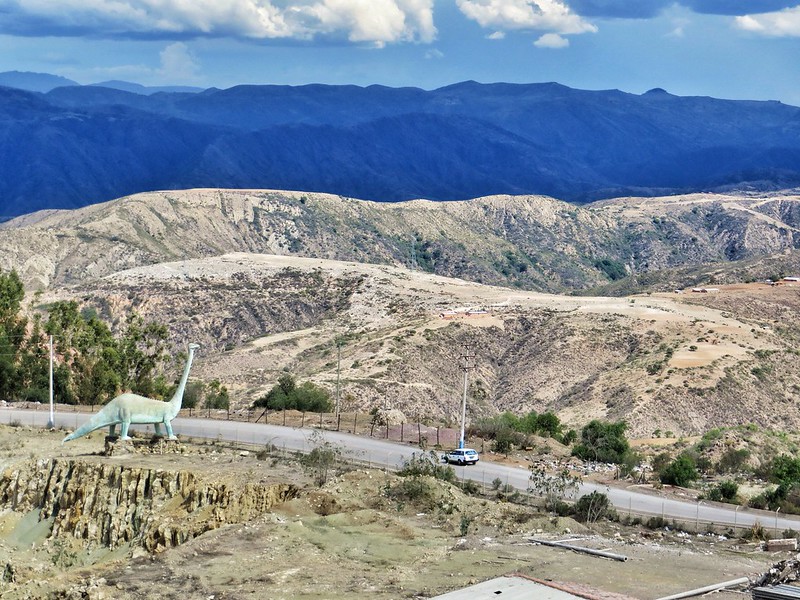
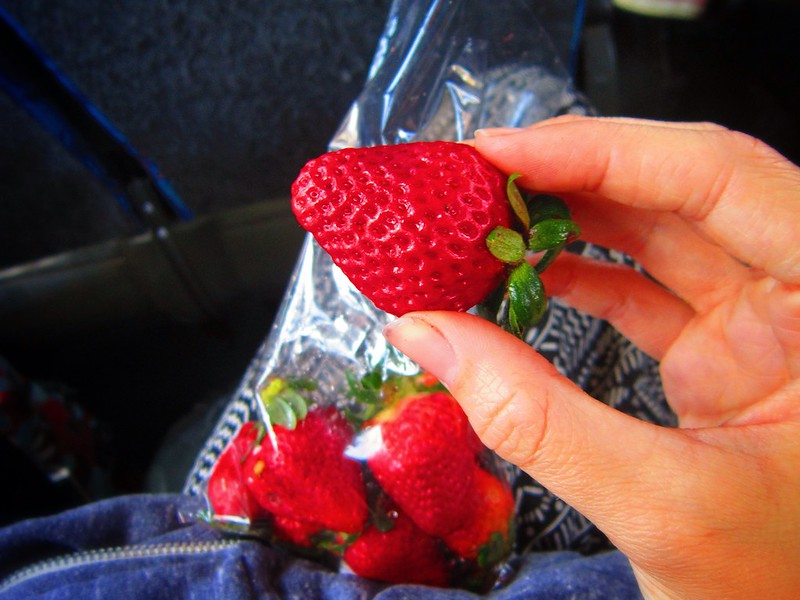
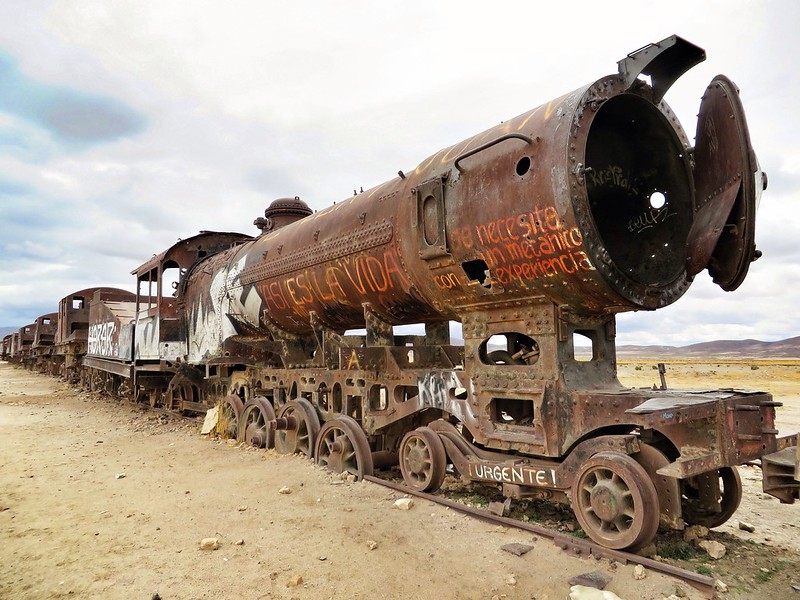
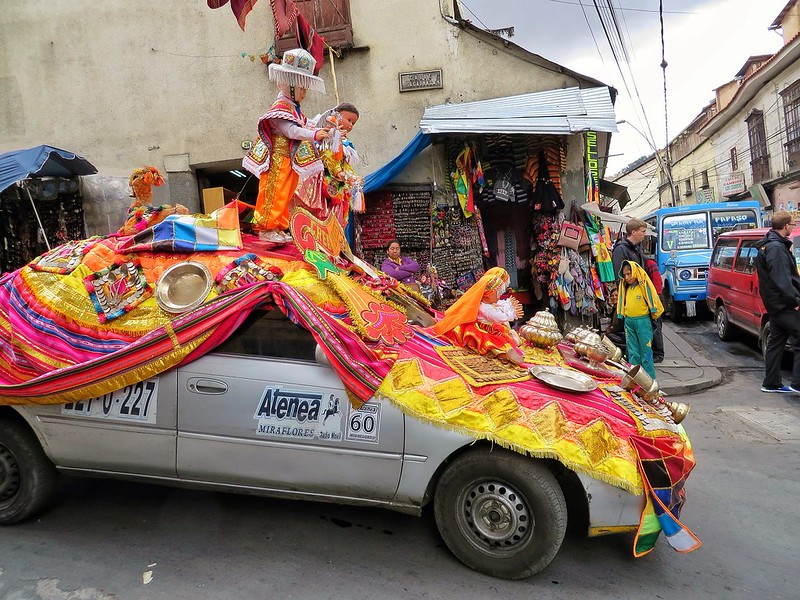


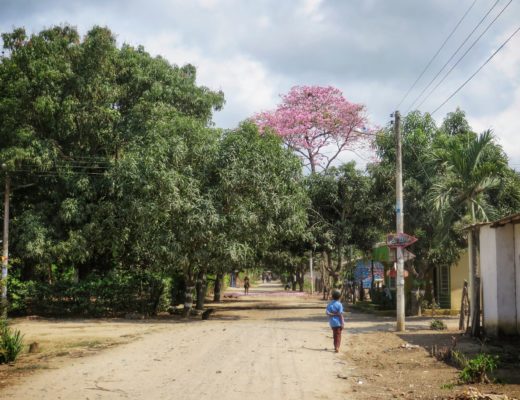
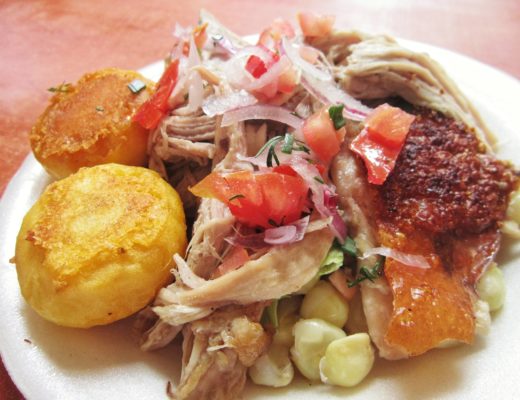
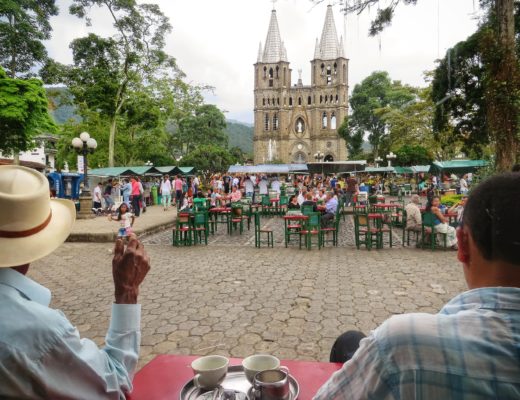
35 Comments
Jennifer
January 16, 2014 at 1:59 amI want to nominate this post as my favoooooooooooooorite for the month! I had some laughs out loud on my own, remembering my experience in Bolivia and the silly buses! 😉 THanks for this
Flora
January 19, 2014 at 12:20 amAww thanks Jennifer! Glad you enjoyed it so much 🙂
Britney McSweeney
January 16, 2014 at 4:12 amThe love the photo of the blankets!
Awesome information, I’m pinning this post for later when I finally make it over to Latin America.
Silvia
January 18, 2014 at 4:26 pmSuper useful (and entertaining) post! Bookmarking it now. I’m usually fine with public transport when I travel, but it’s soooo much easier knowing the ins and outs of it before starting out. Thanks!
Flora
January 19, 2014 at 12:21 amYou’re welcome Silvia! I thought it might be a useful resource for people planning to travel by bus in Bolivia. Plus the entire experience is so hilarious it warranted a step by step guide :p
saru
January 18, 2014 at 7:43 pmi feel jealous of you… 🙂 ..
Britany
January 19, 2014 at 8:01 pmBolivian buses are certainly a crap shoot. Never a boring experience, that’s for sure! They weren’t as cold as a the buses I caught in Colombia, (which were literally arctic) but the temperature always seemed to be too hot or too cold. Layers are definitely essential! And I love your bus kit. I regularly managed to forget one of those important items for the long rides. Good call putting it all together in a kit that you can keep at the ready for every bus journey!
Flora
January 24, 2014 at 9:49 pmI swear, putting together that little bag of essentials has been one of my best travel moves in a long time!
Ed Rex
January 23, 2014 at 12:11 amOne of the best posts I’ve read for a long Time!
It’s got facts, experience, humour and great formatting.
Big pat to yourself on the back?
Ed
Flora
January 24, 2014 at 9:51 pmAww thanks so much Ed! I’ll definitely take that pat on the back too 🙂
Thirteen Hours in Atlanta Airport: Why I'm Flying Back Home
January 23, 2014 at 12:16 am[…] 23:30: brush my teeth in the nearest bathroom then fall asleep under eye mask at my departure gate. Good old travel emergency kit! […]
Cat of Sunshine and Siestas
January 23, 2014 at 11:22 amI’ve just booked a ticket to India for April, and feel like some of these tips and tricks might do for trains there, too! Hilarious article, to boot.
Flora
January 24, 2014 at 9:55 pmOh I think the parts about trying to stay sane would most definitely be applicable to India! Have an incredible time out there Cat – and if you need any tips just let me know 🙂
Katie Featherstone
February 12, 2014 at 9:21 amHa ha! Thanks for this- I’m hoping to head to Bolivia soon and it’s interesting to hear somthing other than the sales pitch!
Flora
February 22, 2014 at 4:17 pmMuch as I loved Bolivia, I still feel the bus experience (and most transport in general) really needed a thorough explanation!
Clancy
February 27, 2014 at 7:23 amYou need to add some valium to the travel kit. You can buy it in most bolivian pharmacies and it really eases the pain of those terrifying journeys…you dont give a shit any more! and sleep is a real possibility. (Don’t do it to often though – its not a good thing to be hooked on)
Water. And a blanket. A kindle is nice. Food supplies. Ipod. defo the earplugs and blindfolfd. Keep your valubles safe.
have fun!
Flora
March 20, 2014 at 1:35 amI actually picked up some diazepam in Bolivia before I left – couldn’t stand the bus terrors any longer! It helped out substantially on my twelve hour night bus ride last night…
26 At 26: Birthday Resolutions for a New Year
March 8, 2014 at 12:10 am[…] not actually necessary isn't good. Quite apart from braving the adventurous elements of South American bus rides, I've recently learnt a lot about climate change in regards to the aviation industry, and its […]
Getting to Know Me: a Retrospective
April 10, 2014 at 12:19 am[…] South America, the transport system is all about buses. In India, the vast majority of my journeys were on trains. I've had issues with both kinds of […]
Joel
April 14, 2014 at 3:03 amExcellent blog you’ve got here.. It’s hard to find high quality writing
like yours nowadays. I seriously appreciate individuals like you!
Take care!!
Jonas
May 26, 2014 at 7:33 pmGreat article! We are starting our Bolivian adventure tomorrow, and have ready many horror (and funny) stories about the bus system.
Thankfully, your post has put my mind somewhat at rest.
I believe it’s called, having realistic expectations!
Flora
June 2, 2014 at 4:48 pmAha I think that’s the best way to put it – then you can’t be too surprised! Good luck with the buses Jonas 🙂
Jenna
January 27, 2015 at 6:49 amYou are a brave soul. Also, fabulous writing! Can’t wait to read some more 🙂
Flora
January 27, 2015 at 2:10 pmThanks Jenna – although it was less bravery and more sheer terror on occasion..! Hope you stick around and read more of my stuff 🙂
gringoinbolivia
May 31, 2015 at 9:04 pmYes Bolivian buses are a struggle at the best of times. Even the best companies always seem to have something wrong, ie broken seats, toilets, heating, windows etc.
Flora
June 17, 2015 at 10:50 amDon’t I know it – Bolivian buses are definitely something of an experience..!
John
July 13, 2015 at 7:15 amHaha this is so hilarious. Glad you took the time to write this wonderful piece. I too experienced the Bolivian bus system when I was there for 6 weeks in ’08. My favorite was the “budget” overnight bus from La Paz to Uyuni. Something told me I should bring a sleeping bag.. glad I did, because the INSIDES of the windows and metal surfaces of the ’70s vintage bus were FREEZING OVER with ice from the people’s breath!!! It must have been 40 degrees in the bus… When we arrived at the obscene time of 4 am, I was aroused from a wine-and-valium coma by a guy screaming UYUNIIIIIII!!!!!!!!! And I hauled my sorry, sedated ass out into the freezing cold night. I loved Bolivia so much I went back recently and had another wonderful time. Never got on another bus without my sleeping bag!
Flora
July 22, 2015 at 5:32 pmCheers John, glad it brought back some memories! I don’t think I’ve ever been colder on public transit in my life than the first time I took the night bus from La Paz to Sucre.. But I never saw ice inside the windows! Congrats for surviving it :p
How to Cope with Getting Sick when Travelling
August 31, 2015 at 10:51 am[…] illness. Top contributors are changes in temperature and climate, stress (if you’ve taken a bus in South America you’ll understand), unsanitary toilets and, you’ve guessed it, actually […]
Kevin G
September 12, 2015 at 1:11 amSo sorry someone put a gun to your head, forced you to go to Bolivia, and endure these horrible experiences in a poor 3rd world country..we all know that transportation in the UK is always perfect, except when they go on strike. .
well, you should also enjoy paying 10 to 20 times as much for the same distance. .tourists love latin America and Asia for the cheap prices, then whine about and mock everything.
Best to stay in UK, western Europe, USA, Canada, Australia, NZ, etc..properly civilised places where you can pay 4 or 5 times as much for your little vacay, if you’re nit too cheap or tight with your money to do so
Arnaud
February 6, 2016 at 6:46 pmAlmost a month ago I had a violent accident in Bolivia. Luckily, I’m pretty good, but do not want this happen to someone else, so I’ll tell you my experience.
01/04/16 Patty and I traveled to Bolivia. We had a whole plan between La Paz, Uyuni, Copacabana, Puno and Cusco. As we wanted everything to go well, reaching La Paz we bought our tickets and tours in a travel agency.
We booked bus tickets La Paz-Copacabana for 01/07/16.
On 01/06/16 we were in Uyuni and we received a call from the agency to tell us that we have to change the bus company because there was a strike in El Alto. They offered us that we could store our bags, that the bus had wifi and would be a good experience. Obviously, it was all a lie. The company was TRANS INTERNATIONAL TITICACA also known as TITICACA TOURS.
01/07/16 we arrived at 6:00 am to the bus station. Everything was a mess. They sold tickets in excess, they put us in any bus, we boarded the bus like cattle and the tourists even came up with the bus almost underway.
Of course I complained but I was ignored, we were treated terribly and the spokesman answer that “if you do not want to take the bus, there are other people who will do it.” Unfortunately, we hadn’t enough time and we had to be at our destination because we had to take a plane to Cusco.
The bus left shortly before 7:00am. The first part was a trail, because of the strike we took an alternate route. By 8:30 am, we were on the road usually used to go to Copacabana.
About 10:30 am, apparently by mechanical failure (the brakes broke), the bus began to wobble, then accelerated, crash into a mountain and flip up. The bus was shattered and some of us flew through the windows.
Due to the severity of the accident my friend and I were hospitalized for almost a week in El Alto, Bolivia. The owner of the company appeared four days after the accident (not by choice) and he wanted us to sign some papers. It was a horrendous treatment and, in short, told us that if we wanted to sue the company we can do it; we have to say that there was no apology involved.
Please, share this post. No one is free from an accident and also often of totally unpredictable events, but in our case was more neglect than anything else. I don’t want that this happen again. No one should go through what we had!!
If you know anyone that is traveling to Bolivia, tell them to never ever take TRANS INTERNATIONAL TITICACA (TITICACA TOURS). They do not care about people life.
Investigations are under way in Bolivia. The company still continue operating in Bolivia and Perú. Help us to prevent this from happening to someone else.
Flora
February 7, 2016 at 10:32 amHi Arnaud, I’m so sorry this happened to you and I’m extremely glad that you and your friends are alright! Sadly road accidents are a common issue in some countries, and I was often quite worried about the state of some buses I rode in – and equally some of the men who were driving them… I hope you manage to get some compensation for the trauma you’ve been through, too.
Glenda Hurlstone
June 8, 2016 at 10:22 pmoh memories. i once had someone vomit on the bus. and we had to put up with it for hours.
Emma
December 18, 2016 at 3:34 amCould you recommend the best option of the bus companies? Seems like there are no good options! But is there one better than the others? I’m a college student backpacking through Bolivia soon and just came across this article. So scary!! I would be appreciative of any additional advise. Thank you for sharing.
Everything You Need to Know Before Your Trip to Bolivia | Dallazy.com
May 24, 2021 at 10:30 am[…] process of catching a Bolivian bus deserves a post all to itself, so for now I’ll mention the bare basics: over-speeding drivers, bizarre departure and arrival […]